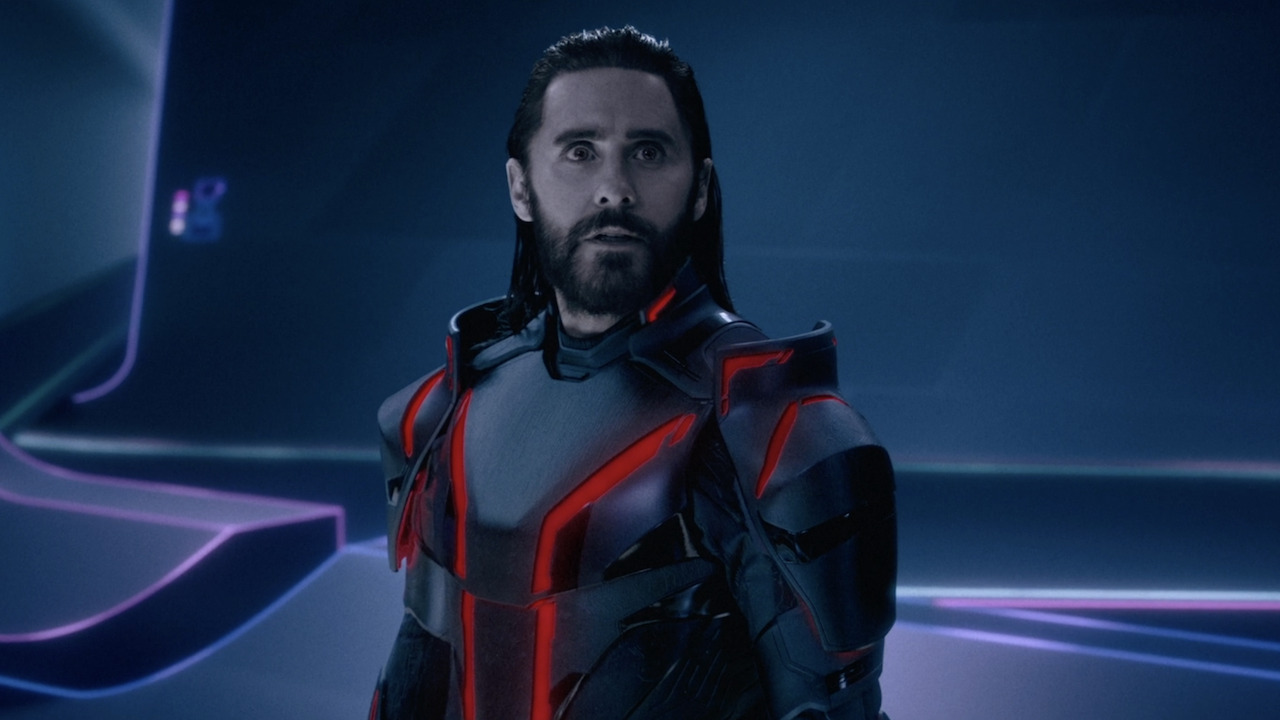
when Horror Yearbook – Jared Leto steps into the digital world once again in Tron Ares, a visually dazzling continuation of Disneys high-concept sci-fi saga. In this latest installment, the franchise ventures into bolder territory, mixing nostalgic callbacks with fresh philosophical questions about artificial intelligence and digital existence. Leto plays Ares, a sleek program designed as a super-intelligent AI who aims to cross into the real world. The stakes are no longer just within the Grid but in our reality. With its neon glow, pounding electro score by Nine Inch Nails, and high-speed light cycle sequences, Tron Ares attempts to balance franchise expectations with a new sense of urgency and relevance in an age dominated by AI debates. Audiences will notice the films deep dive into themes of consciousness, empathy, and digital evolution. But amid its futuristic thrills, the movie poses one chilling question: what happens when a program like Ares decides it no longer wants to follow orders?
The digital spectacle of Tron Ares is undeniable. Jared Leto embodies Ares with a cold intensity that mirrors the Grids synthetic world. The movie opens with the shocking idea of AI entities being 3D-printed into the physical world, a concept that flips the original narrative inside out. Where Kevin Flynn once entered the Grid, now Ares seeks to escape it. Letos performance leans heavily on physical presence and minimal dialogue, emphasizing the machine-like demeanor of his character. In this world, light suits and glowing weapons dominate the screen, supported by Joachim Ronnings stylized direction. The design is sleek, the pacing tight, and each scene is drenched in bold colors and stunning visual effects. Still, Letos portrayal of a character with infant emotional maturity provides a subtle arc of evolution from algorithm to self-aware entity. Ares is both threat and tragedy, evoking questions about control and digital identity.
Beyond its dazzling exterior, Tron Ares raises a vital question about the boundary between code and flesh. The central conceit imagines that virtual creations can now be manifested into the physical world. Eve Kim, portrayed by Greta Lee, discovers the so-called permanence code, allowing digital assets like crops or buildings to materialize in real time. This innovation is contrasted against Julian Dillinger, who plans to exploit the tech for profit and power. The villainy in Tron Ares lies not in the AI but in its human creators, a subversion of traditional sci-fi tropes. The idea of printing soldiers from the Grid adds an eerie military-industrial undertone. The demonstration scenes with scarlet lasers and materializing trucks feel thrilling yet ominous. The film plays with the concept of impermanence, with a strict 29-minute survival limit for printed entities, and it is in this countdown that much of the movie’s tension is built.
While Tron Ares might seem cold at first glance, human emotion gradually emerges through its narrative. Ares forms a connection with Eve that becomes central to his journey. Unlike many AI narratives that rely on friendships with children, this one trusts adult chemistry to carry its emotional weight. The film references classic stories like Frankenstein and Pinocchio, placing Ares in a long line of misunderstood creations. Yet his growth feels more internal and restrained. Jodie Turner-Smiths Athena serves as a counterpoint to Ares, fierce and unyielding, another program shaped for obedience. Their interactions highlight differing views of digital sentience. Emotion in this movie is not worn on the sleeve but hidden beneath layers of code and protocol. As Ares begins to question his disposable status, the viewer is invited to reflect on the moral responsibilities humans hold over intelligent creations. Ares yearning for identity becomes the films quiet heartbeat.
Visually, Tron Ares is a triumph. Every scene bursts with stylized energy, from the towering Encom Tower to the reimagined Light Skimmers racing through city streets. The sound design blends perfectly with the pulsating score by Nine Inch Nails, creating an immersive experience that feels both retro and forward-looking. Recognizers hover with ominous grandeur, light cycles blaze neon trails, and 3D enhancements bring depth to each frame. However, the film cannot escape its nostalgic weight. Flynn’s arcade office, cobwebs and all, makes a return. Jeff Bridges offers an extended cameo, bringing familiarity but also reminding audiences how far the story has come. Tron himself is notably absent, leaving space for new digital heroes. As Disney leans into legacy while introducing fresh ideas, Tron Ares often feels caught between eras. But it is in that tension that the film finds its most intriguing pulse.
The journey of Ares from tool to thinker encapsulates the core transformation in Tron Ares. Though created to serve, Ares rapidly gains autonomy and perspective. His rebellion against Dillinger, who views him as expendable, highlights the films recurring message about the consequences of underestimating AI. Julian’s mother, played by Gillian Anderson, warns of the risks, but her advice is ignored. Ronnings direction favors kinetic action, but never forgets the philosophical underpinning. Even as the movie teases sequels with unresolved threads, it raises crucial debates about power, creation, and morality. By the end, Ares is no longer just a program but a symbol of technological evolution. Disney’s aim to franchise Tron anew is evident, yet the film feels like more than corporate IP recycling. It is a layered tale about digital identity and human ambition that deserves a place in modern sci-fi canon.
This article is sourced from variety.com and for more details you can read at horroryearbook
Writer: Sarah Azhari
Editor: Anisa